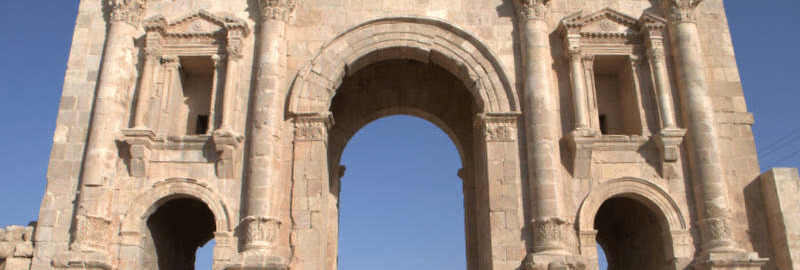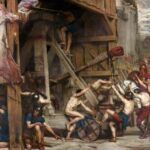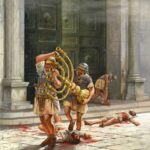Gerasa (modern Djerba) is located in Jordan. It was founded by Alexander the Great, and as he says, Józef Flavius belonged to Decapolis, i.e. a union of ten Hellenistic cities inhabited by non-Jewish people who opposed Semitic influences in the Jordan Valley.
Gerasa experienced the greatest flowering in Hellenistic and Roman times. The foundations for the development of this city were laid by the Nabataeans, who in the first century made it an important center on the caravan route in Arabia. In 106 CE emperor Trajan conquered the kingdom of Nabataeans, which included the temple of Zeus, Artemis, the hippodrome and bath complexes, and numerous public buildings.
When the city was visited by Emperor Hadrian in 129 CE a triumphal arch was erected. The next period of splendor falls on the sixth century during the reign of Justinian the Great, when many Christian churches were built. During Arab times, Geraz began to fall into oblivion, its end came with the earthquake in 749. The city was rediscovered in 1806 by the German archaeologist Ulrich Seetzen and excavations began which continue to this day. In the 1980s, Polish archaeologists also participated in excavations.
Archaeologists managed to reconstruct the course of the impressive defensive walls, whose length is 3450 m. They were probably built in 75 years and also surround the area of today’s city. In the southern part of the walls is the most impressive gate of Gerazy, the so-called South Gate. It is preceded by the said Hadrian’s impressive arch – the impressive building has three passages of which the middle is higher than the side. When we cross the arch, on the left we see the ruins of the impressive hippodrome from I-III in, which was initially 260 meters long. It is estimated that up to 15,000 spectators could see events happening on the hippodrome.
Passing the south gate we pass the ruins of the temple of Zeus. It was built around 163 on the site of an earlier temple. The temple from the front has 4 and on the sides 12 columns, their height is 14 meters. Behind the temple on the west side is the southern theater built in the years 81-96, it had 4 entrances and 14 rows of seats for over 3,000 spectators.
Next to the temple is the so-called Oval Square – the most characteristic complex located in Gerasa. The square, which at its widest point is 80 meters, is surrounded by two semicircular porticos with Ionic-style columns, a total of 56 columns.
The square marks the beginning of the main street cardo maximus, called columnar street, which comes to the next round square probably serving as a forum. In its center stands the southern tetrapylon (gate with four entrances). Cardo leads to the center of Geraza, where the impressive temple of Artemis towers at its highest point. On the left side of the street you can see the remains of a marble public fountain – a nymphaeum, which was built around 190. The water pool was surrounded by a semicircular apse with numerous niches in which statues were placed.
Passing the nymphaeum, we pass the monumental temple of Artemis, built in the years 150-170 CE; it rose on the podium (40 x 22m), and it was entered via monumental stairs, whose width was 100 m. The main part of the temple was 160 x 120 meters and was surrounded by a portico which on the long sides had 36 columns and on the shorter 26. The diameter of the column stem was 1.5 m and it is estimated that their original height was 16 m and was crowned with Corinthian capitals. Only eleven columns have survived to this day.
On the opposite side of the temple, ruins of the Propylaea Church have survived. Following the main street on the left you can see the second theater called northern which has survived in a slightly worse condition. It was built around 165, and expanded again in 235, and the audience could accommodate 1,600 people.
Baths and numerous buildings from Christian times are also interesting within the walls of Gerazy. In the fifth and sixth centuries a total of 11 churches were established here. They are usually three-nave basilicas, and the building material came from earlier buildings in Gerasa.
- Remains of the baths and warehouses complex
- Wall paintings of the remains of columns in the North Palace
- 3rd phase of Masada development
- Reconstruction of the North Palace in Masada
- An attempt to reconstruct the Flaminius Circus by Giacomo Lauro from 1641















